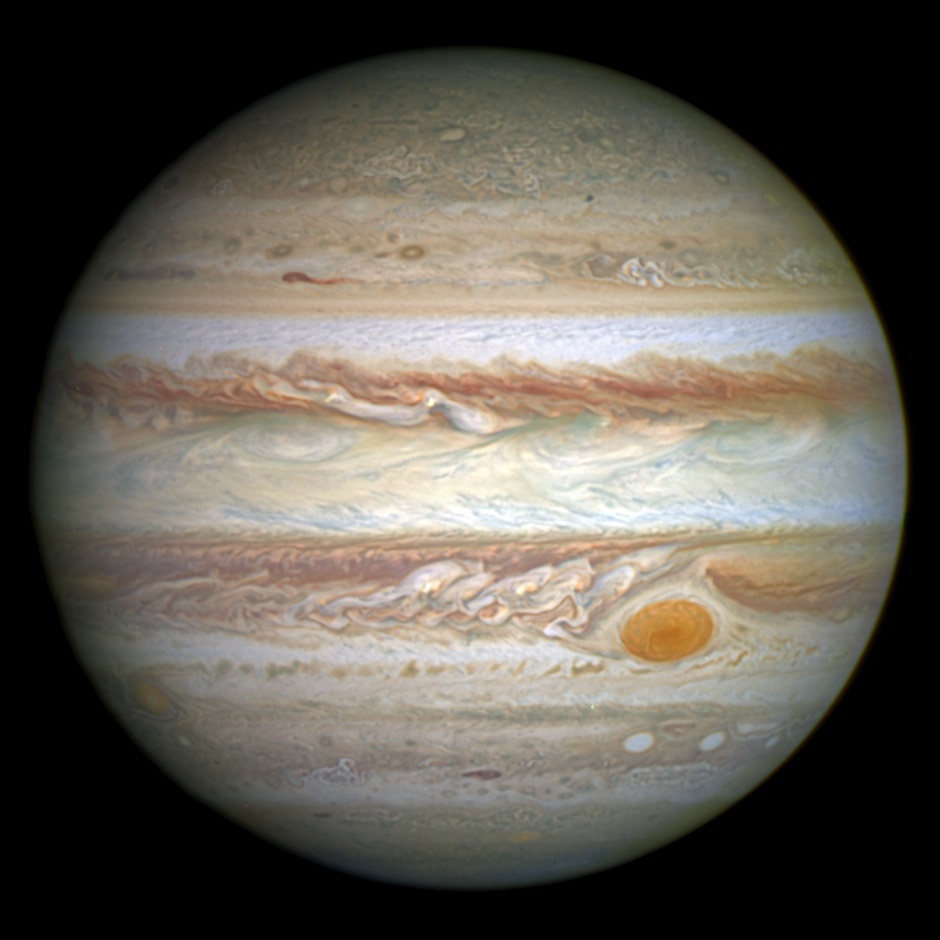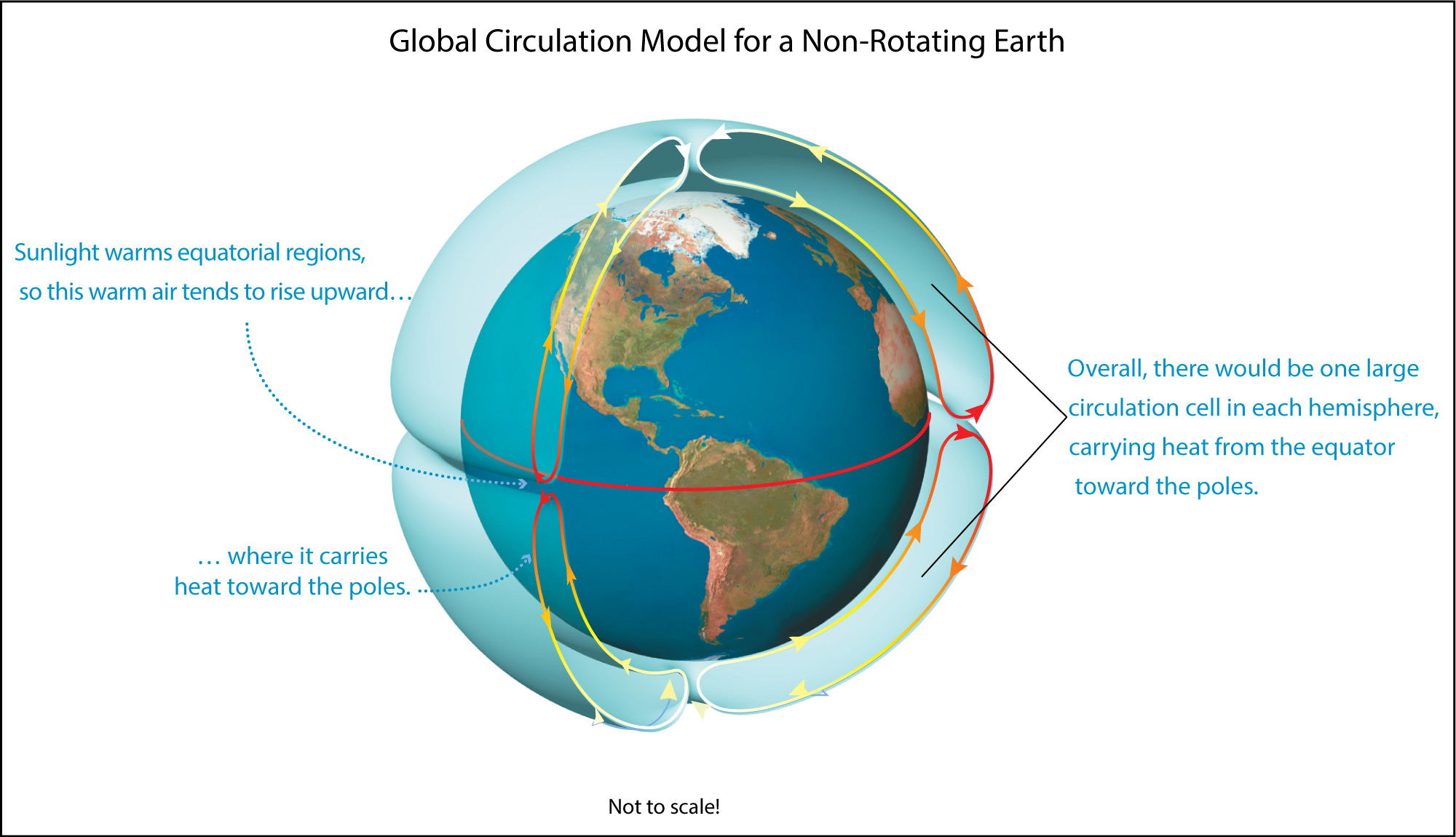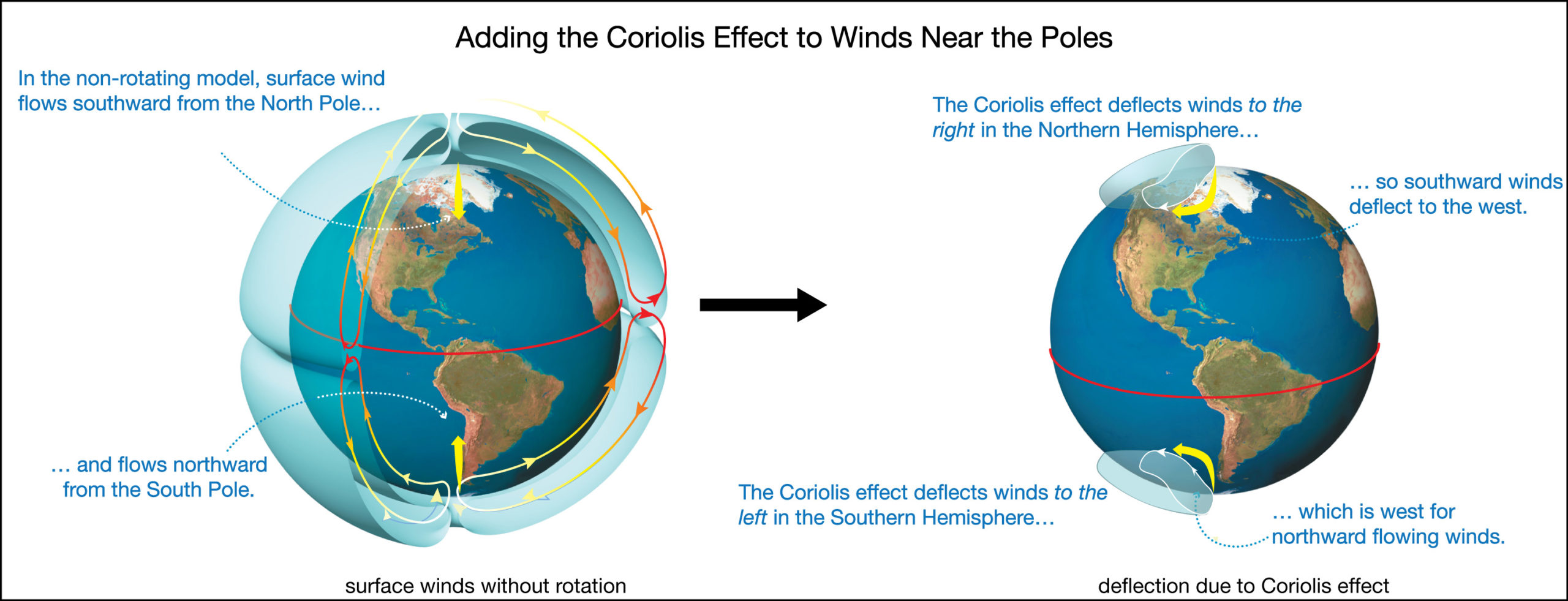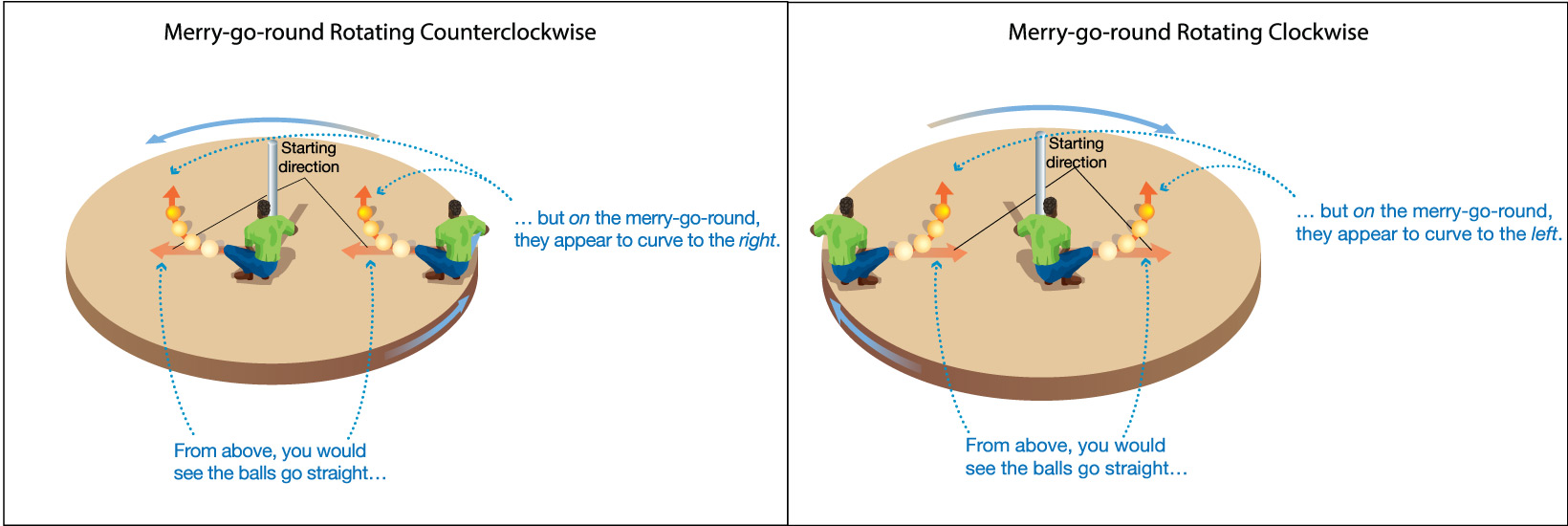Why does the Coriolis effect create three sets of circulation cells, rather than some other number?
Great question! Remember that, without rotation, there would be just two large circulation cells, one for each hemisphere (see Figure 6.2.2–2). With rotation, the Coriolis effect comes into play, deflecting winds flowing toward the equator to the west. As you saw in Figure 6.2.2–3), this prevents wind from following a continuous path all the way from the poles to the equator, which is the reason that rotation forces each single circulation cell to split. But why does each of them split into three cells, rather than some other number of cells?
The answer has to do with the strength of the Coriolis effect. Figure 6.2.2–3 shows that, for Earth, if you start with winds from the poles, the Coriolis effect will have diverted these winds fully to the west by the time they get about 1/3 of the way to the equator (which means to about 60° latitude in each hemisphere). It is this 1/3 of the way that explains why the single large cell splits into three cells on Earth. In other words, the split into three cells is a consequence of the particular strength of the Coriolis effect on Earth.
This brings us to a follow-up question, which is: What determines the strength of the Coriolis effect? If you look back at the way the Coriolis effect works on a merry-go-round (see Figure 6.2.1–4), you’ll probably realize that one factor is the speed of rotation: the faster the rotation, the stronger the Coriolis effect. For planets, a second factor is the strength of gravity, with stronger gravity meaning a stronger Coriolis effect. To summarize: The strength of the Coriolis effect on a planet depends on the planet’s gravity and rotation rate.
We can use this idea to explain how wind patterns on other planets compare to those of Earth. Let’s take two examples (photos below).
First, consider Venus. Venus has almost the same strength of gravity as Earth, but it rotates extremely slowly (taking about 243 days for a single rotation). As a result, Venus has such a weak Coriolis effect that it has a circulation pattern like that for a non-rotating planet, with just one large cell in each hemisphere. These cells carry heat from the equator to the poles so effectively that Venus has nearly the same temperature at all latitudes.
Next, consider Jupiter. Jupiter has much stronger gravity than Earth and it rotates very fast (one rotation takes less than 10 hours). This gives it a very strong Coriolis effect, which splits each hemisphere into many more than Earth’s three circulation cells. In fact, this is why Jupiter has a “striped” appearance. In essence, each stripe represents a different circulation cell. (The Great Red Spot is a giant storm, so it breaks up the general pattern.)




